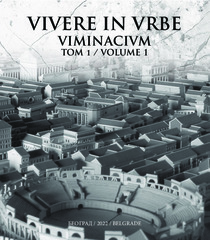Приказ основних података о документу
Naкit i fibule: između funкcionalnosti, estetsкe vrednosti i statusnog simbola
Jewellery and brooches: between functionality, aesthetic value, and status symbol
| dc.contributor | Vojvoda, Mirjana | |
| dc.contributor | Danković, Ilija | |
| dc.contributor | Milovanović, Bebina | |
| dc.creator | Milovanović, Bebina | |
| dc.creator | Redžić, Saša | |
| dc.date.accessioned | 2023-02-08T10:35:44Z | |
| dc.date.available | 2023-02-08T10:35:44Z | |
| dc.date.issued | 2022 | |
| dc.identifier.isbn | 978-86-6439-070-5 (print) | |
| dc.identifier.isbn | 978-86-6439-071-2 (online) | |
| dc.identifier.isbn | 978-86-6439-069-9 (izdavačka celina) | |
| dc.identifier.uri | http://rai.ai.ac.rs/handle/123456789/476 | |
| dc.description.abstract | По лепоти израде и врсти материјала, примарна улога накита je током развоја циви- лизације била декоративно-естетска. Римља- ни га стога, не без разлога, називају ornatus, ornamentum – украс, декорација, али је јако брзо преузео и улогу статусног симбола. Кроз облик, боју или материјал, накитом је исти- цана и моћ заштите, да би временом постао омиљени део, пре свега женске, а неретко и мушке свакодневнице. Током римске цивилизације издвајају се два периода у схватању улоге и значаја накита. У доба Републике, скромност је третирана као врлина. Ношење скупоценог накита указива- ло је на луксуз и расипништво, што је било у супротности са очекиваним понашањем жена тога времена. Римска матрона jе била оличење смерности, умерености и елеганције. Развојем и ширењем Римског царства, мења се однос према накиту, нема више ни ограничења, нити скромности. Накит постаје све разноврснији и приступачнији | sr |
| dc.description.abstract | Over the entire period of civilization’s development and owing to its beauty and the material it was made of, the basic role that jewellery played was decorative and aesthetic. This is exactly the reason why the Romans called it ornatus, ornamentum – ornament, decoration, although soon enough it became a status symbol. Through form, colour or material, jewellery was used to underline the power of protection, but in time, it became a favourite part of women’s, and often also men’s, everyday life. During the Roman civilization, two periods can be distinguished in understanding the role and importance of jewellery. In time of the Roman Republic, modesty was considered a virtue. Wearing expensive jewellery pointed to luxury and squandering, which was contrary to the expected women’s behaviour of the time. The Roman matron was a personification of humbleness, modesty and elegance. With the development and spread of the Roman Empire, the relationship towards jewellery also changed. There were no more limitations, nor modesty. Jewellery becomes more diverse and accessible. | sr |
| dc.language.iso | sr | sr |
| dc.language.iso | en | sr |
| dc.publisher | Beograd : Arheološki institut | sr |
| dc.rights | openAccess | sr |
| dc.source | Vivere in vrbe Viminacium | sr |
| dc.subject | nakit | sr |
| dc.subject | fibule | sr |
| dc.subject | jewellery | sr |
| dc.subject | brooches | sr |
| dc.subject | Viminacijum | sr |
| dc.subject | Viminacium | sr |
| dc.title | Naкit i fibule: između funкcionalnosti, estetsкe vrednosti i statusnog simbola | sr |
| dc.title | Jewellery and brooches: between functionality, aesthetic value, and status symbol | sr |
| dc.type | bookPart | sr |
| dc.rights.license | ARR | sr |
| dc.citation.epage | 426 | |
| dc.citation.spage | 285 | |
| dc.citation.volume | 1 | |
| dc.citation.volume | 426 | |
| dc.identifier.fulltext | http://rai.ai.ac.rs/bitstream/id/1187/bitstream_1187.pdf | |
| dc.identifier.rcub | https://hdl.handle.net/21.15107/rcub_rai_476 | |
| dc.type.version | publishedVersion | sr |


